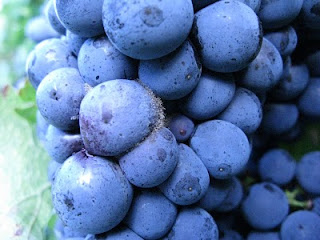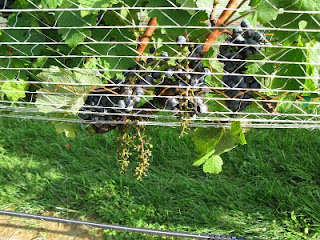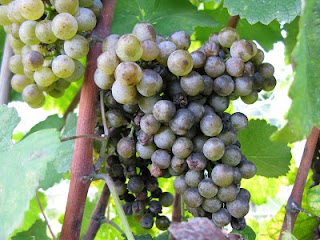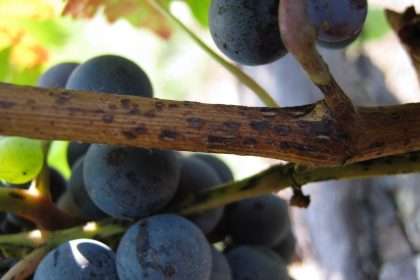Boy, it has been a rainy month of September!
If you are subscribing to Mark Chien’s “Wine Grape Information from Penn State”, you probably seen this, but here’s a link to NOAA on the precipitation record from Irene and Lee. It gives you an idea of how we started this month with a lot of moisture in the air. As you can imagine, this type of weather will increase risks of having late season rots.
I have heard some people had an outbreak of Botrytis, sour rot, ripe rot, etc. The pictures above are examples of Botrytis bunch rot. The management strategies for these rots are discussed in the previous post. Since temperature during these rain events were low and we have not have many days with sunlight, you may want to keep your clusters hanging little longer. Please keep remind yourself about the PHI when you decide to apply fungicides.
One of the strategies for sour rot and Botrytis management discussed was the management of birds. Tony’s group has been using a bird netting, and here’s the good picture of the efficacy of it. As you can see, the clusters inside of the net are not damaged while the ones outside of it are gone.
Also, if you take a look at the first picture of Botrytis, you will notice that the berries at the top side of the picture was damaged by either bird or bees. It is not uncommon to see the start of Botrytis on the damaged berries since it can grow on higher sugar contents than many other pathogens.
The other concern is on the foliar infection of downy mildew, which can also cause defoliation. It is important to keep these leaves healthy to have a good accumulation of carbohydrates to the trunk. At this point, we need to concern about the PHI, thus, the materials you can use against downy mildew is limited. Both captan and Phosphorous acid materials have a 0-day PHI (Note: captan has 48-72 hour REI).
Because we had many extended wet hours, some of you are having potential issues with molds growing on the surface of berries. The one I saw at several places are the ones look like sooty mold on apples. We know that the sooty mold of apple is caused by numerous species of fugal complex, thus, I would expect the same. These fungus are surviving on some nutrient matters on the surface of berries and probably the infection is superficial. Apple growers are applying captan for it, thus, I assume we can do the same.
I have heard that in the mast, these molds (or spores of them) sediment on the bottom of the tank, and probably do not cause any ill effects. However, unfortunately, I do not have much information. If you have experience to share, please let me know.







